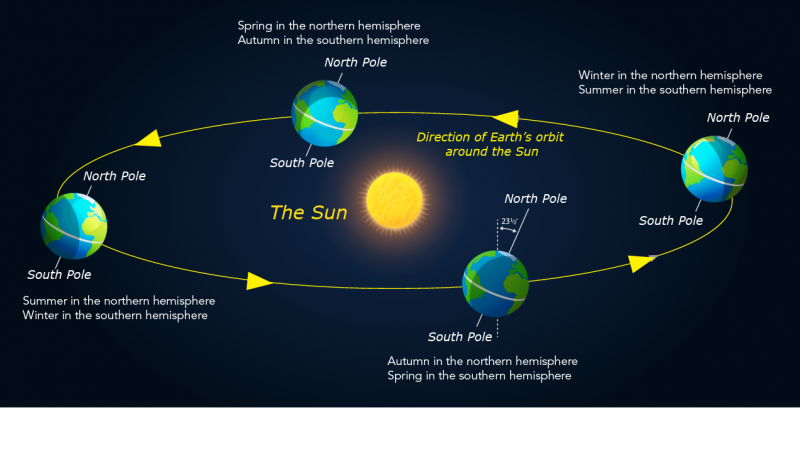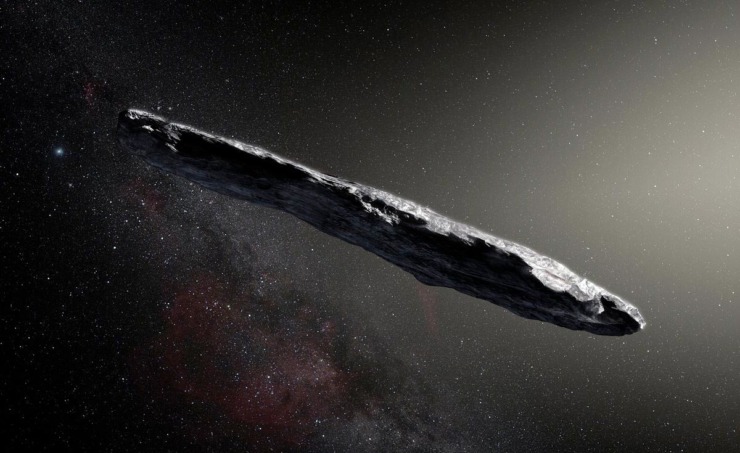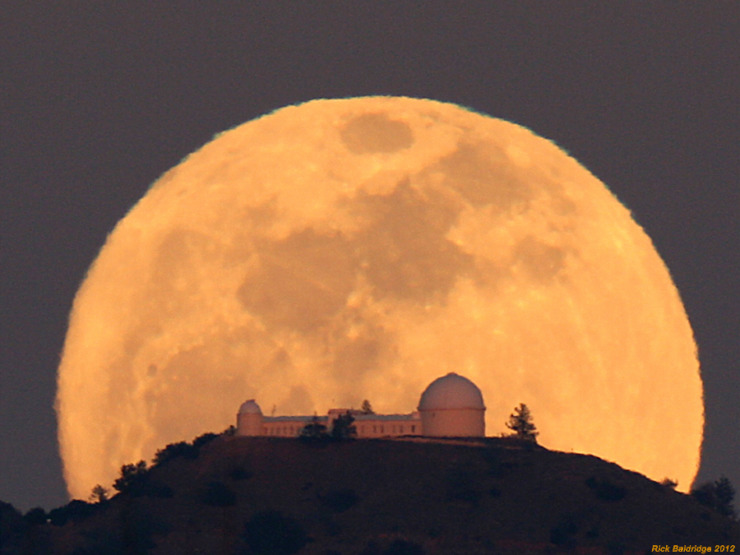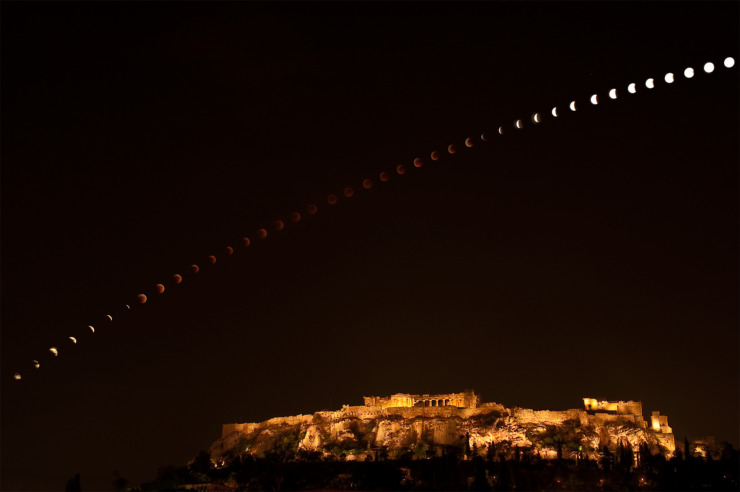Saturday, Dec. 21 will be the winter solstice – the shortest day and longest night of the year, with which we mark the beginning of the winter season in the Earth’s northern hemisphere. It’s interesting to note that the planets Venus and Jupiter do not have seasons like the Earth does. The sunshine any spot on those planets receives is pretty much the same all year round. Yet the shape of the orbit for all three planets is pretty similar.
The reason we have seasons has to do with a terrible traffic accident the Earth was involved with, way back when the planets were first forming. There were more smaller worlds flying around the Sun then, and not all had settled into stable orbits. We think that a mini-planet collided with the Earth and caused our planet to “lean over” – to have a tilt to the axis around which we spin. And like many accident victims, we were never able to straighten out again. (Venus and Jupiter seem to have been spared this fate, although Mars is also tilted.)
Because our planet’s axis leans over by about 23 degrees, sometimes our northern hemisphere leans into the Sun, and we get more hours of sunshine, plus sunshine that hits us more “straight on” – we call that the warmth of summer. And 6 months later, we lean out of the Sun and get fewer hour of sunlight plus sunlight that hits us more obliquely – leading to the cold of winter.
If you love all our versions of the winter solstice holiday – the music, the presents, the getting together with family — you should be grateful for that ancient accident that tilted us. And if you are not a fan of the winter holidays – the jingles, the commercialism, the pressure to have a good time – you can blame that old traffic accident that tilted us.
In any case, the good news is that (without the Congress needing to agree, or the President signing anything) the days after this Saturday will get longer and longer, and the light of our star will shine us for more and more of our 24-hour days.
Happy Winter Solstice!




